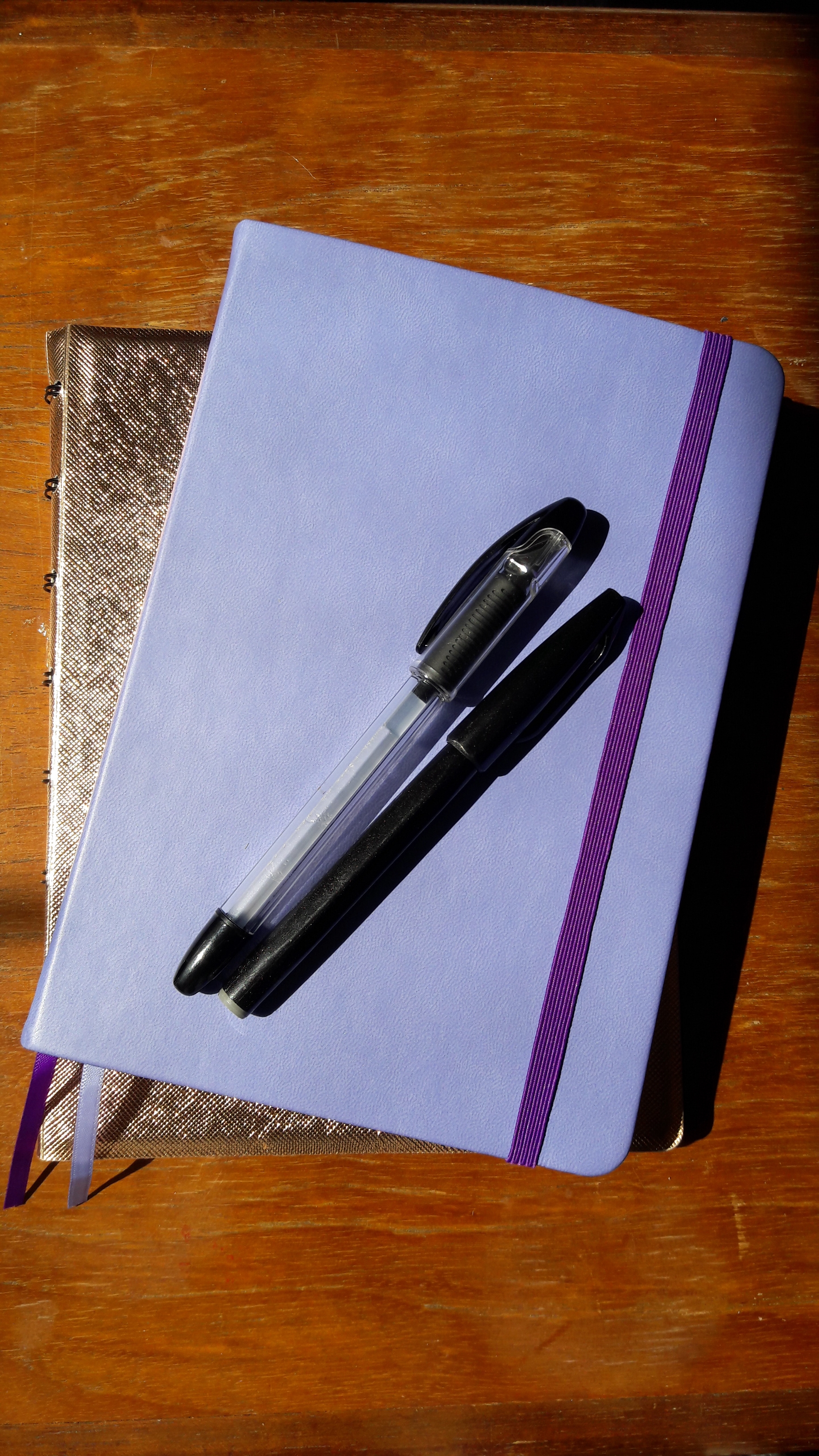In all likelihood, you’ve heard of journaling for better mental health. It’s a very common piece of advice. I myself tried many different ways before I settled on the system I’m using now – the bullet journal.
Perhaps you’ve heard of bullet journaling as well. It has been quite a trend in recent years. Initially I started using it to manage depression and provide a form of catharsis and motivation. Happily, it quickly became much more than that as I realized I could adapt my own journal to help me with my physical health problems too. (Myalgic encephalomyelitis/chronic fatigue syndrome – also known as ME/CFS. I’m currently being tested for MS though, just in case.)
So, what is bullet journaling? In its simplest form, it is a planner which sets out tasks and events in clearly defined lists. From there, the short explanation explodes in a web of directions. It can be plain and minimalistic or covered in doodles. Don’t like drawing? Never mind. Stickers, stencils and washi tape will be your saviors. Scrapbookers can use it to create something they can see on a daily basis, not just every so often. Artists can combine it with their sketchbooks. List makers can number away to their hearts content. Anybody can use it to gather their life together and make it specific to them. Make it colorful or monochrome – just make it yours.
What goes into it you ask? Well to start, you can have a “weekly spread” just as in a normal diary. Plus, you can have monthly overviews, yearly overviews, pages to track things like symptoms, pages to list goals or what you are grateful for, a place to note birthdays and anniversaries, space to doodle, spreads for specific things like what to pack for holiday…and of course, pages for traditional journaling.
You don’t need anything expensive either. The only tools you absolutely need are a notebook and a pen. Once you’ve got the hang of it you might invest in more materials (hello, stationery!) – but to start with, those two cheap items will do. If it does work for you, you’ll soon know because you’ll probably end up scrolling through ideas on Pinterest, YouTube and Instagram. Just make sure you get someone to change your Amazon password if you ever find yourself drugged up on painkillers due to your health problem. Trust me.

My own bullet journal is a mix of a traditional diary, sketchbook and organization tool. I used to be a super-organized person who never forgot anything. I was slowly deteriorating anyway due to depression and anxiety, but then I became physically ill in November 2017 with possible ME or MS. My PhD, and feels like my life, has been on hold since then. Now I can barely remember if I had breakfast and need to make notes of everything. Seriously, I think my doctor cringes every time I go to see her and take out my journal. My appointments are long enough as it is.
Seven months into bullet journaling and I can honestly say I enjoy it. It helps be to remember essential tasks and encourages me to do the non-essential ones when I feel like my body won’t manage them. This in itself gives a mental boost because I feel like I’m still able to do something to look after myself, maintaining some independence, even though I’m not able to work again yet.
If I haven’t sold bullet journaling to you yet, consider some of the things that I include to help me every month.
1. An exercise tracker. This has become more and more sparse as I’ve physically deteriorated but it is an encouragement to do something when I have a little strength.
2. Habit, symptom and sleep trackers. I include things I need to remind myself to do e.g. self care tasks in my habits and the others are a good idea in case I need to report anything.
3. A gratitude log or good things about me grid. Really good for mental health. If I can’t think of anything, I fall back on things like ‘I have long hair’ or ‘my height’.
4. Master to-do or shopping lists. I have these as rolling lists for the month that I can refer to.
5. Medication lists. We all know how often we get asked about these.
6. Brain dump pages. This is for when I need to release tension by getting what is in in my head out of there.
7. Weekly spread. Every week I set up a double page with space for each day and list scheduled things plus a few small tasks for me to attempt.
8. Space to doodle. Test new stationery and practice drawing.
If these ideas have got you intrigued, I urge you to do some research and see how bullet journaling can help you. I’m so glad I started. My journal might not be the neatest example but it works for me and that is what matters. Plus, I found a new hobby and improved my drawing skills too. Double win.
See what a bullet journal can do for you.

